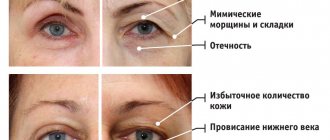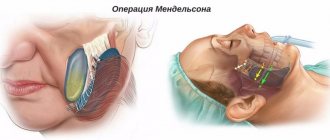Endotracheal anesthesia, as a subtype of general anesthesia, is used for surgical interventions. Its full name is combined intubation (endotracheal) anesthesia.
General anesthesia, called endotracheal anesthesia by medical specialists, is considered a safe and reliable method for protecting the patient from inevitable pain.
It is necessary to eliminate the causes that previously often led to death from painful shock of the patient on the table. Today, this combined anesthesia is more often used by surgeons during their work. What are its differences and features?
What is endotracheal anesthesia?
Completely “turning off” consciousness and putting the patient into surgical sleep is the goal of anesthesiologists when performing many operations. Doctors use mask, intravenous and combined anesthesia.
The latter combines the 2 previous types of anesthesia. Then the anesthetic components simultaneously enter the blood and respiratory channels. This type of anesthesia is called endotracheal, and the technique is multicomponent.
Before the operation begins, the anesthesiologist instructs the nurse to administer a prescribed dose of anesthetics into the patient’s vein.
After the patient is put to sleep, the doctor performs tracheal intubation - inserts a thin tube connected to an anesthesia device into the respiratory canals.
After endotracheal anesthesia during the surgical procedure, the patient's skeletal muscles relax. This protects against interruptions in breathing and aspiration.
After endotracheal anesthesia
The final stage of general anesthesia is the removal of the patient from the state of drug-induced sleep. After endotracheal anesthesia, some confusion is observed, which is explained by the residual effect of sedatives on the central nervous system. Possible headaches, mild dizziness and nausea are associated with this. However, the features of modern anesthesia drugs are such that while the patient may be bothered by their residual effect, he is in a state that resembles euphoria. And when the euphoria wears off, the “echoes” of anesthesia also disappear.
A specific phenomenon after endotracheal anesthesia is a slight sore throat, sore throat, and possibly a cough. These consequences are explained by the fact that the endotracheal tube irritates the mucous membrane of the larynx and trachea. As a rule, the discomfort goes away within a day.
When is such anesthesia indicated?
Intubation anesthesia is recognized by surgeons as a priority over other types of anesthesia. And in some situations it is considered the only possible or preferable method.
Endotracheal anesthesia is chosen in certain cases.
INDICATIONS
- carrying out intrathoracic surgical procedures accompanied by artificial pneumothorax;
- difficulty ensuring patency of the patient's respiratory canals;
- symptoms of a “full stomach”, which is a prerequisite for the manifestation of aspiration and regurgitation;
- rapid penetration into the abdominal cavity;
- difficulties in the breathing process caused by the patient being in the appropriate position on the table (for example, positions according to the methods of Overholt, Fowler, etc.).
Preference by operating doctors is given to endotracheal anesthesia under specific circumstances.
INDICATIONS
- Use of muscle relaxants and mechanical ventilation (MV) when intermittent positive pressure occurs.
- Surgical measures on the head or on the facial frame, which is often used in plastic surgery.
- Intracranial interventions.
- Volumetric and extended dental procedures.
- Long-term interventions using microsurgical techniques.
- Tendency of the operated patient to laryngospasms.
Intubation anesthesia is indicated for children and adults with disturbances in the functioning of the nervous system.
Similar anesthesia is also used during various surgical interventions.
INDICATIONS
- ophthalmological operations and those performed through the nose;
- surgical procedures on the thyroid gland;
- activities performed on the ear (middle and inner), neck, throat;
- surgical invasion of the body, when it is unacceptable for tissue, blood, secretions, or other biological substances to enter the patient’s respiratory canals.
During laparoscopy, endotracheal anesthesia is preferable due to the diagnostic performance when the abdominal space is filled with gas.
The gaseous substance in the lower part puts pressure on the diaphragm and interferes with breathing. This type of anesthesia removes difficulties and helps to conduct examinations in the abdomen and pelvis.
Endotracheal anesthesia - contraindications
Endotracheal anesthesia has become very widely used in all branches of surgery, largely due to the fact that it has practically no contraindications. Intubation technology allows for complete control of vital functions; it can even be used to perform 16-hour heart surgeries.
In the context of plastic surgery, endotracheal anesthesia has no contraindications. Why? Because intubation cannot be used only for certain conditions in which any operation not related to the elimination of an immediate threat to life is contraindicated. For example, endotracheal anesthesia is contraindicated in case of myocardial infarction or pneumonia, but no one would even think of undergoing plastic surgery.
To learn more about the anesthetic techniques used for a particular plastic surgery procedure, book a free consultation with a Soho Clinic surgeon.
When is endotracheal anesthesia dangerous?
Anesthesiologists will not use combined analgesia if the patient is diagnosed with one of the following diseases.
CONTRAINDICATIONS
- acute inflammatory nature of the upper respiratory canals;
- hemorrhagic diathesis;
- bronchitis;
- pneumonia;
- chronic/acute manifestation of an infectious disease (for example, tuberculosis of the throat, lungs).
In case of tuberculosis or a malignant tumor of the soft palate or base of the tongue, intubation is accompanied by the threat of spreading infection (cancer cells) along other respiratory tracts.
Because of this, those suffering from such diseases are given endotracheal anesthesia through a tracheostomy.
Indications and contraindications
Indications for endotracheal (intubation) anesthesia are:
- performing surgical interventions on the chest organs, accompanied by surgical accumulation of air or gases in the pleural cavity;
- poor conductivity of the respiratory system channels;
- irritable bowel syndrome;
- risk of aspiration of gastric contents into the respiratory tract;
- risk of rapid movement of liquids or gases in a direction opposite to normal;
- operations on the abdominal organs;
- difficulty breathing due to a certain position on the table;
- the likelihood of using muscle relaxants and artificial ventilation with intermittent positive pressure during the surgical process;
- surgical interventions performed on the facial skeleton and head (often used in cosmetology centers for plastic surgery);
- intranasal and ophthalmic invasions;
- treatment of the thyroid gland, upper ear, sinusitis (in this case, endotracheal anesthesia ensures the obstruction of blood and other biological fluids into the respiratory tract);
- operations aimed at treating intracranial diseases;
- dental treatment;
- long processes requiring the presence of microsurgical medical equipment;
- tendency to laryngospasms;
- frequent disruptions in the central nervous system.
But there are situations when this method of anesthesia is contraindicated.
These include:
- chronic diseases of the upper respiratory tract;
- inflammation of the bronchi;
- acute respiratory viral infections;
- hemorrhagic hemostasiopathies;
- pneumonia;
- malignant tumors of the oral cavity (there is a risk of cancer cells spreading throughout the body, so such people can only undergo endotracheal anesthesia through a tracheostomy);
- problems with the cardiovascular system;
- cachexia;
- anemia;
- old age;
- pregnancy;
- severe damage to the liver and kidneys (anesthesia will cause additional intoxication and distort the patient’s body’s response to anesthetics and their breakdown products).
What complications occur?
A competent anesthesiologist will do his job without harming the patient. But the specialist cannot completely exclude the occurrence of complications.
In rare cases, serious negative manifestations after the use of endotracheal anesthesia are caused by the anatomical and physiological state of the real patient. For example, if he has a short epiglottis.
Typically, those undergoing surgery feel pain in the larynx after waking up from anesthesia.
Rare surgical patients complain of injuries to the teeth, back of the throat, and tongue.
Infrequently, postendotracheal anesthesia leaves unpleasant sensations such as a foreign object in the throat. Some operated patients experience a “hangover” malaise.
An experienced anesthesiologist eliminates the likelihood of complications. He will create the only correct “cocktail” for anesthesia and will not interrupt for a second the observation of the person being operated on during the surgical procedure.
Complications of endotracheal anesthesia
Any surgical intervention is associated with the risk of postoperative complications. The goal of using endotracheal anesthesia is to minimize this risk. Thanks to the intubation technique for administering medications, the risk of aspiration of gastric contents into the lungs is reduced, the risk of respiratory tract infection, and the risk of respiratory or cardiovascular failure is minimized.
Complications of endotracheal anesthesia, that is, complications caused by the insertion of an endotracheal tube, are extremely rare. These include injuries to the tongue or larynx, which occur during intubation “on the go” before urgent (urgent) operations. During planned surgical interventions, which include all plastic surgeries, there are no complications of endotracheal anesthesia.
What precedes the administration of intubation analgesia?
The anesthesiologist will begin his work after studying the results of a biochemical examination and talking with the patient:
- Then premedication is carried out - drug preparation for anesthesia. It is carried out the evening before the planned surgical intervention. This is due to the need to calm the patient, for which barbiturates are used.
- To bring histamine levels to normal, the patient is prescribed antihistamines and tranquilizers are selected.
- The second time, premedication is repeated 1 hour before the surgical procedure.
- On the table in the operating room, even before applying anesthesia, the nurse (anesthetist) of the doctor-anesthesiologist administers narcotic analgesics and atropine to the patient. The latter opposes sinus cardiac inhibition.
The anesthesiologist’s step-by-step preparation of the patient for the surgical procedure is an important component in obtaining a positive outcome from the event.
Abstract: Endotracheal anesthesia
ANESTHESIOLOGY AND RESUMETIMATOLOGY
Lecture No. 1 Endotracheal anesthesia.
Endotracheal anesthesia is the most common type of anesthesia in the world. Because this type of anesthesia has clear advantages over other types of anesthesia. Thanks to this type of pain relief, it became possible to widely operate on the chest organs (lung operations, heart surgery, esophagus surgery, etc.)
This type of anesthesia developed slowly, gradually, and only in the 50s. In the 20th century, this type of anesthesia became leading.
HISTORY OF THE DEVELOPMENT OF ENDOTRACHEAL NARCOSIS
·
Paracelsus (1493-1541) for the first time inserted a tube into the trachea of a dying person and, with the help of leather furs, straightened the lungs and saved the person, apparently in a state of acute cardiac-respiratory failure.
·
Andre Vesalius (1514-1564) experimentally proved the advantages of endotracheal anesthesia by inserting a tube into the trachea of animals with an open pleural cavity
·
In 1788, the English surgeon Cologne invented a special tube that he used to rescue drowned people on the Thames. Thus, he managed to save several drowned people who died primarily from respiratory failure.
·
In 1871, the German surgeon Trendelenburg invented a tube with a cuff, i.e. made the airways airtight during endotracheal anesthesia (which prevents the most dangerous complication of mask and endotracheal anesthesia - aspiration).
Endotracheal anesthesia received its modern development when the famous Canadian anesthesiologist Griffith first used muscle relaxants in 1942. Because Only with their use is full endotracheal anesthesia possible. Endotracheal anesthesia received rapid development in the 50s, contributed to by Soviet surgeons: Kupriyanov, Vishnevsky and others.
MAIN ADVANTAGES OF ENDOTRACHEAL NARCOSIS
Endotracheal anesthesia helps combat acute cardiac and respiratory failure, since even satisfactory removal of carbon dioxide and introduction of oxygen allows one to get rid of hypoxia.
1.
Possibility of exact dosage. The exact dosage depends, of course, primarily on the evaporator, but since Even in a closed circuit, part of the narcotic substance is removed into the atmosphere; it is impossible to maintain a constant certain concentration of the narcotic substance.
2.
Possibility in a very short time, i.e. within a few seconds, change the minute ventilation volume and change the blood gas composition within any limits. This is important because if, for example, the patient’s pulmonary ventilation is insufficient and if the patient is on spontaneous ventilation, then respiratory analeptics must be administered, but, of course, no respiratory analeptic will ever make it possible to increase minute ventilation within sufficient limits, and endotracheal anesthesia allows this to be done within minutes. NB: tidal volume is 500 ml, minute ventilation is 6-8 l, minimum oxygen in the respiratory mixture is 20%
3.
The ability to ensure good airway patency throughout anesthesia. This is different from mask anesthesia, in which the tongue interferes (when the muscles relax, the root of the tongue sinks and completely blocks the upper respiratory tract of the lower ones)
4.
Possibility of ensuring tightness in which aspiration is impossible. Even if the contents of the stomach enter the oral cavity, they will never enter the lungs.
5.
The ability to ensure good oxygenation and prevent pulmonary complications in the postoperative period provides the opportunity for good sanitation of the tracheobronchial tree. Of course, if a patient with healthy lungs is operated on, this problem does not arise, but in patients with a lung abscess, tracheobronchitis, and especially with bronchiectasis, during surgery, purulent sputum floods the tracheobronchial tree, as a result of which the tracheal lumen can be closed by more than half. For sanitation, a catheter is inserted and connected to suction; sodium bicarbonate can also be administered through the tube to thin the sputum. Such actions cannot be performed with mask anesthesia.
6.
Advantages without which it is impossible to operate on the chest:
·
Possibility of using muscle relaxants
·
possibility of using long-term mechanical ventilation
From an anesthesiological point of view, muscle relaxants, first of all, make it possible to reduce the amount of a narcotic substance. Some patients previously died during mask anesthesia from toxic damage to the liver and kidneys. There are no ideal drugs, although nitrous oxide is close to ideal. Previously, they were forced to give anesthesia at the level of the 3rd surgical stage, because it was necessary to achieve complete muscle relaxation. Muscle relaxants themselves provide relaxation of skeletal muscles, i.e. the dose of the narcotic substance must be reduced to the dose at which consciousness turns off and pain relief occurs, which can be achieved already at the 1st stage. The use of muscle relaxants made it possible to reduce complications associated with the surgical technique because the surgeon has the opportunity to work calmly. That. the number of complications associated with incompetence of sutures has decreased (since relaxed muscles are injured to a lesser extent), which is very important during surgery on hollow organs (if sutures fail, diffuse peritonitis occurs, with a very high mortality rate).
6. The possibility of using mechanical ventilation does not require proof because it is possible to provide any level of oxygenation and removal of carbon dioxide
NB: the most ideal oxygen tension in arterial blood is 100 mm. Hg Art. If you need to support it higher, then such a possibility exists. The ideal carbon dioxide tension in arterial blood is 35-45 mm. Hg Art.
The human body feels better in any situation if it maintains a state of physiological homeostasis.
MAIN STEPS OF ENDOTRACHEAL NARCOSIS (the stages should not be confused with the components of endotracheal anesthesia).
1.
Correction of homeostasis for which you need to perform a full clinical and biochemical examination
2.
Premedication is medicinal preparation for anesthesia. Before the operation, the patient should be as calm as possible and not be interested in his future fate. In the evening before the operation, long-acting sleeping pills are prescribed, usually barbiturates. During surgery, the level of histamine in tissues and blood increases, so antihistamines must be included in the premedication. It is imperative to give tranquilizers (if translated from Latin, a tranquilizer means bliss of the spirit). There are no ideal tranquilizers, but if you select a tranquilizer well and give it at the right time, then the anxiolytic effect is good. At least 1 hour before surgery, this scheme is repeated. Premedication on the operating table includes narcotic analgesics (promedol, fentanyl, omnopon, etc.) and necessarily atropine, because intubation itself and barbiturates somehow activate the vagus, which can lead to cardiac arrhythmias up to vagal cardiac arrest (atropine is administered intravenously in a dose of 0.5 million immediately before anesthesia).
3.
Next, proceed to induction anesthesia. It is very important to choose the right drug. For example, ether cannot be used for induction of anesthesia because it irritates the respiratory tract, causes agitation, which leads to a state of stress. The most widely used intravenous barbiturates (hexenal, thiopental) because It is they who ensure a calm sleep close to physiological sleep. You can also use sombrevin, calypsol. But we must remember that barbiturates sharply depress breathing. After the surgical stage of barbituric sleep occurs, muscle relaxants must be administered because Intubation is only possible with good relaxation. In no case should you do the opposite: if you administer muscle relaxants before the onset of sleep, the patient will remain in a state of stress because He can’t say anything and is choking. And when complete relaxation of the muscles occurs, first of all, the chewing one, you can begin intubation and connection to a mechanical ventilation with the connection of a drug to maintain anesthesia.
COMPLICATIONS WITH ENDOTRACHEAL NARCOSIS
Before describing the complications of endotracheal anesthesia, it is necessary to recall the types of hypoxia:
1.
Hypoxic hypoxia. The name itself suggests that there is little oxygen in the inhaled air. Most often it occurs when we provide little oxygen to the mixture. Most often, this situation occurs when using nitrous oxide (the ideal maximum ratio is 3 to 1); if anesthesia is insufficient and the anesthesiologist increases the proportion of nitrous oxide to more than 80%, then hypoxic hypoxia will certainly develop. In life, hypoxic hypoxia occurs when climbing mountains.
2.
Hemichypoxia. More often occurs with massive blood loss, when there is little hemoglobin. It is usually treated with blood transfusions and mechanical ventilation.
3.
Circulatory hypoxia. Most often it occurs in cardiovascular failure, when the blood does not reach the microcirculatory bed. Most often this happens due to hypotension, when normal capillary pressure is not maintained and oxygen naturally does not reach the cells.
4.
Histotoxic hypoxia occurs in various poisonings. In anesthesiological practice, this is associated with an overdose of a particular narcotic substance.
Complications:
Complications associated with intubation:
·
It would seem that intubation is a simple procedure, but, unfortunately, there are a number of people with peculiarities of their anatomical and physiological structure: the head is poorly straightened, the jaw is poorly positioned, the epiglottis is short, and during intubation, even in skillful hands, the glottis is not visible. And unfortunately, some patients still die from unsuccessful intubation. In such cases, it is necessary to call a more experienced doctor for help. If this fails, it is necessary to perform a tracheostomy, or you can save the person with diffusion breathing: the trachea is pierced with a simple needle, a tube is connected to the needle and oxygen flows. This means that even if a person is not breathing, we provide him with oxygen diffusion, which is safe for half an hour. Since oxygenation occurs well, but carbon dioxide accumulates in a lethal dose after 30-40 minutes.
·
Damage to the tongue, back of the throat, teeth
·
tube bend
·
Laryngospasm is a complication of any type of anesthesia. Laryngospasm is dangerous during induction of anesthesia; sometimes the vocal cords close so tightly that it is impossible to pass the tube. In such cases, the most effective is the use of muscle relaxants because... It is the skeletal muscles that are involved in laryngospasm. Any laryngospasm is relieved by the administration of muscle relaxants, but it must be kept in mind that the patient must be quickly transferred to mechanical ventilation immediately after intubation.
·
bronchospasm occurs when smooth muscles contract, which are not affected by muscle relaxants, so bronchodilators are used, starting with aminophylline. Ftorotan has a powerful bronchodilator effect, which can even be used in the treatment of bronchial asthma.
2. Dangerous pressure is 70 mm. Hg Art. below which capillary blood flow is disrupted. And since the capillary pressure is highest in the kidneys, they are the first to shut down (renal failure). The cause of hypotension is poor heart function, and especially doctors who poorly prepare patients and correct homeostasis before surgery. Most often, hypotension is a discrepancy between the volume of circulating blood and the volume of the intravascular bed. What happens? Even with normal circulating blood volume, we use a number of drugs that cause vascular dilatation (barbiturates, bronchodilators, ganglion blockers, etc.) In this case, the volume of the vascular bed increases, but the volume of the blood volume does not change. This must be taken into account and approximately 500-700 ml of liquid should be transfused at the start of the operation. If peripheral spasm is relieved, the heart performs less work and therefore there is less risk of hypotension. It is very important to compensate for blood loss during major operations. If you compensate for blood loss in time, you can cope with obviously high blood loss, but if this is not done and centralization of blood circulation occurs, then microcirculation stops and it is very difficult to remove the patient from this state.
I write abstracts: E from 10 to 20 thousand. Payment in St. Petersburg upon receipt, in other cities by mail. Prepayment for future essays is possible. A list of completed abstracts can be ordered by mail (address listed above).
Management and recovery from anesthesia
When intubation is carried out and the patient is connected to the ventilator equipment, the time comes for the main period.
Accompanying the work of surgeons, the anesthesiologist constantly monitors the life support signs of the person being operated on. The patient’s heart rate and heart activity, as well as his blood pressure, are checked at regular intervals of 15 minutes.
General anesthesia is maintained by administering additional doses of neuroleptics, muscle relaxants or inhalations with a mixture of anesthetics.
Surgery under endotracheal anesthesia makes it possible for the anesthesiologist to adapt to the body’s need for analgesia. This ensures the most favorable degree of safety for the patient.
Upon completion of the surgical procedures, an equally important time period occurs - the release of the patient from narcotic sleep.
First, the dosage of medications is gradually reduced. The patient's breathing is restored with the help of atropine and proserine (they are administered at intervals of 5 minutes).
When the patient has returned to spontaneous breathing, the anesthesiologist performs extubation by clearing the area of the tracheobronchial tree. Having removed the tube, the specialist repeats the procedure with the oral space.
Timely correction of anomalies that arise during the operation helps to return the course of surgical procedures to the right direction.
What is endotracheal anesthesia?
Doctors have two types of general anesthesia at their disposal: mask and intravenous. Based on these two main ones, there are other mixed techniques. Most often, surgeons use endotracheal anesthesia in their practice. Since the mid-20th century, this type of anesthesia has been considered leading. From the name it follows: “endo” (inside) and “trachea”, that is, “inside the trachea”. Doctors also refer to this type of anesthesia as intubation or combined endotracheal anesthesia, since the method is multicomponent.
Before the operation begins, a certain dose of anesthesia is injected into the vein to put the patient to sleep. Next, the anesthesiologist performs tracheal intubation, that is, a thin tube is placed into the respiratory tract, which is connected to an anesthesia machine.
Specifics of endotracheal anesthesia in children (4 obstacles)
The difficulty of inserting a tube in children compared to adults is due to:
- relatively large narrowed lumen of the larynx;
- increased risk of edema in it;
- repeated bleeding during nasal intubation;
- increasing occurrence of laryngospasm and during extubation.
Indications for intubation anesthesia in children include intrathoracic interventions and operations for intestinal obstruction. A similar anesthesia is used for intracranial and large-scale surgical procedures with the child lying on the table on his stomach.
Preference for such intubation is given when surgical procedures are performed on the face, head and neck, as well as while the minor patient is in the lateral position.
The preferred choice of endotracheal anesthesia for children undergoing surgery is to perform the procedure on the upper half of the abdomen, if it is necessary to perform tonsillectomy in a sitting child, as well as during pneumoencephalography.
Intubation is contraindicated in cases of major operations on the extremities, in the perineal area, hernia repair and appendectomy.
It is more rational to intubate children undergoing surgery under anesthesia in a comfortable position. After insertion, the tube is connected to the anesthesia machine and secured with a medical plaster (bandage).
Extubation is performed very gently with the restoration of spontaneous breathing - this will avoid laryngospasm. Then, without waiting for the child to wake up, the healthcare professional inserts an oral airway.
During the post-anesthesia period, the child is placed in a warm bed on his side to prevent aspiration of vomit and retraction of the tongue.
Endotracheal anesthesia. A little history
An irreplaceable discovery that protects the human body from stress and allows not only the patient to comfortably undergo surgery, but also enables surgeons to do their job.
Anesthesia is the main element of any serious surgical intervention - lungs, nervous system, esophagus, heart. It is characterized by a complete loss of consciousness.
General endotracheal anesthesia is different in that it can be used for patients of any age. It consists of inserting a special thin tube into the trachea, connected to a device, through which narcotic substances are injected.
That's why it has this name: endo - inside and trachea. It is also called intubation or combined, because the drugs enter both the blood and the respiratory tract.
The world of medicine became acquainted with endotracheal anesthesia back in the 14th-15th centuries, thanks to the Swiss Paracelsus. It was this doctor who first used the method of inserting a tube into a person’s trachea, which saved him from death.
Andrei Vesalius continued his path, proving that this particular anesthesia should become the main anesthesia. When conducting experiments on animals, the indispensability of endotracheal anesthesia was undeniable.
In the 17th and 18th centuries, thousands of drowned people on the Thames were saved by the English doctor Cologne, thanks to a special tube inserted into the trachea.
Further more. A German doctor showed that if you use a tube with a cuff, you can prevent the most dangerous complication of that time - the presence of foreign substances in the respiratory canals during endotracheal anesthesia.
The next stage in the field of anesthesia was recorded in 1942, when the Canadian doctor Griffith and his partner Johnson used muscle relaxants. It was truly a breakthrough in medicine. Muscle relaxants relaxed the muscles and prevented the patient from moving. Moreover, they made it possible to control and manage anesthesia.
The 50s began with the rapid conquest of endotracheal anesthesia and its widespread use, with the enormous contribution of Soviet doctors - Vishnevsky, Kupriany and others.
Question answer
At this age, many doctors are inclined to general anesthesia, in particular endotracheal anesthesia.
The fact is that children are mobile, in most cases they are afraid of surgical intervention. Therefore, under local anesthesia, a small child simply will not allow the surgeon to operate on him; he will twitch, which is especially dangerous. These diseases are not contraindications, although they will make it difficult for doctors to work.
Of course, during the operation all sorts of unforeseen circumstances may arise. A qualified anesthesiologist monitors the patient's condition. If required, it will prolong the effect of anesthesia.
Endotracheal anesthesia - indications
In plastic surgery, endotracheal anesthesia is used for many operations.
Examples include rhinoplasty, augmentation mammoplasty, abdominoplasty, mastopexy, circumferential facelift and SMAS platysmaplasty. Liposuction can also be performed using an intubation technique, although local anesthesia may be chosen for smaller cases. Endotracheal anesthesia is indicated for all long-term operations accompanied by a violation of the integrity of deep tissues, not only the skin. This is how a general rule can be formulated. Minor surgical interventions are often performed under local anesthesia. Examples are otoplasty for protruding ears, bullhorn (a type of lip surgery) or lipoma removal.
Preparations for endotracheal anesthesia (their qualities)
Initial analgesia is carried out by inhalation or intravenous administration of painkillers. Inhalations use steam vapors of ethran, phoran, fluorotane, and other similar mixtures of anesthetics that enter the body through a mask.
In rare cases, nitrous oxide with oxygen is used.
Barbiturates and antipsychotics (eg, droperidol, fentanyl) are administered intravenously. They are used in the form of a solution with a concentration of up to 1%. The dosage of the medication is determined by the anesthesiologist for a particular person.
Tracheal intubation takes place under light anesthesia. The procedure uses muscle relaxants to relax the neck muscles.
The tube is inserted into the larynx using a laryngoscope, then the patient is connected to a ventilator, since the patient is in the deep anesthesia phase.
During induction of anesthesia, droperidol is used by an anesthesiologist in a volume of 2-5 ml. This antipsychotic drug, combined with 6-14 ml of fentanyl, is injected into the patient's vein.
At the same time as the intravenous procedure, the patient is given a mask with a mixture of nitrous oxide and oxygen (their proportion is 2:1 or 3:1). When the patient's consciousness is suppressed, muscle relaxants are administered and intubation is performed.
The neuroleptic effect of droperidol lasts 4-5 hours, which is why the drug is administered in the initial stage of anesthesia. The drug is re-administered only during long operations.
The medication is calculated based on body weight: it requires 0.25-0.5 mg per 1 kg of patient weight.
Fentanyl is required to be administered at 0.1 mg doses frequently, at intervals of 20 minutes. The supply of the drug is interrupted 30-40 minutes before the completion of the operation. The initial dosage of fentanyl is 5-7 mcg/kg.
Only a competent anesthesiologist is able to draw up a program for the combined use of medications during intubation anesthesia.
Endotracheal anesthesia is presented in the video:
Description of endotracheal anesthesia
Endotracheal anesthesia, what is it? First of all, this is a type of general anesthesia, which provides a state of temporary deep sleep, with complete relaxation of muscle tissue, blocking reflexes, sensitivity, consciousness and spontaneous breathing. This condition is provided with combined endotracheal anesthesia. It has a complex technique, but allows you to perform the most complex surgical procedures, while ensuring complete control over the patient’s condition and minimizing the risk of complications.
The combined method of endotracheal anesthesia includes the following components:
- intravenous administration of special anesthetics;
- administration of drugs to relax striated muscles, including respiratory muscles;
- intubation of the trachea and insertion of a special tube into it, through which artificial ventilation of the lungs will take place and narcotic gas will be supplied;
- connection to a ventilator and supply of gaseous anesthetic.
This method is simply irreplaceable for long-term operations, since it allows you to combine drugs and administer them in small doses, which reduces the negative effects of toxins.
Administration of anesthesia by the endotracheal method has a number of advantages:
- with such anesthesia, free patency of the airways is ensured;
- minimal exposure to toxins, and therefore minimal effects of anesthesia, such as nausea and vomiting;
- use of small doses of anesthetic;
- preservation of all functions and natural processes in a slow mode, but without disturbances;
- Wide range of applications, including in the head area.
Expert opinion
- Surgeon
- Cosmetologist
Christine Blaine
plastic surgeon
Very often, endotracheal anesthesia is used in surgery. I can highlight the main advantage - the anesthesiologist fully controls the depth of medicated sleep, monitors breathing functions and ventilation of the lungs. Anesthesia is safe, since the activity of the heart, blood vessels, and respiratory system is not disrupted.
Irina Dorofeeva
practicing cosmetologist
Endotracheal anesthesia is a truly safe type of anesthesia. For example, there is no risk of collision with tongue retraction, which happens in the case of the mask version. In addition, the endotracheal tube, which is inserted, completely isolates the respiratory tract from the esophagus. With the help of such anesthesia, long-term surgery can be performed. Endotracheal anesthesia, as a combined anesthesia, has less toxicity. Moreover, its depth is subject to control by the anesthesiologist throughout the entire surgical procedure.
Advantages of endotracheal anesthesia
Maximum safety and complete control over the depth of drug-induced sleep are the main advantages of endotracheal anesthesia. The risk of “waking up during surgery” is eliminated, as is the slightest possibility of disruption of the respiratory and cardiovascular systems. In other words, this is the safest and most reliable type of general anesthesia, during which the anesthesiologist has everything under control!
The advantages of endotracheal anesthesia are explained by the fact that, thanks to intubation, continuous monitoring of respiratory function is carried out. The anesthesiologist constantly monitors adequate ventilation of the lungs, accurately doses the amount of oxygen entering the lungs, and carefully controls the carbon dioxide content in the exhaled air.
From a safety point of view, one more point is important - the risk of tongue retraction, which is present with intravenous and mask anesthesia techniques, is eliminated. In addition, the endotracheal tube completely isolates the respiratory tract from the esophagus, which eliminates the possibility of saliva and stomach contents entering the pulmonary system.
Other features and advantages of endotracheal anesthesia are the possibility of active use of muscle relaxants, the possibility of performing long-term operations with artificial ventilation, and minimizing the risk of postoperative complications from the respiratory and cardiovascular systems.











